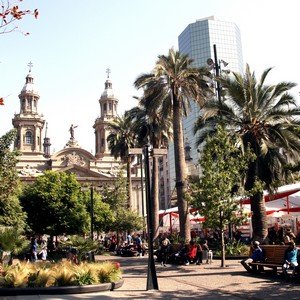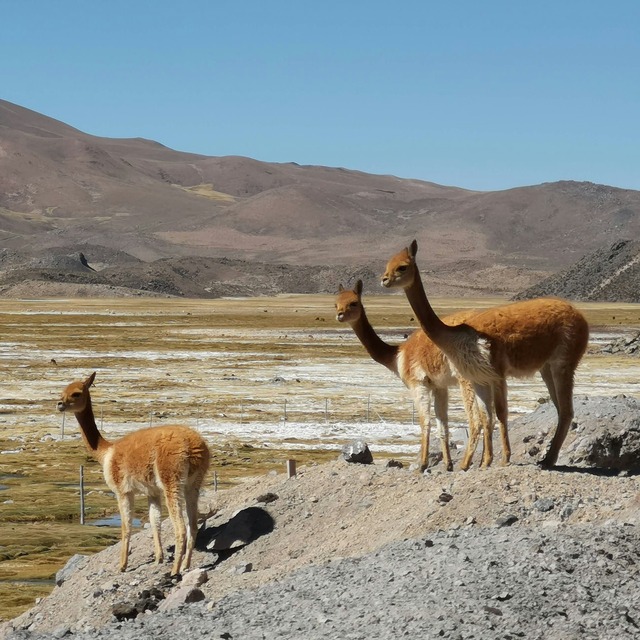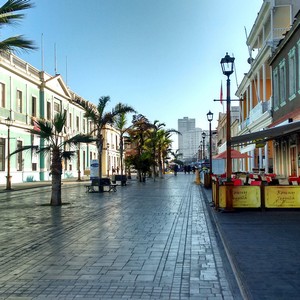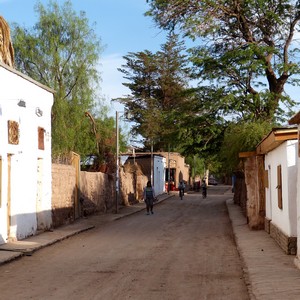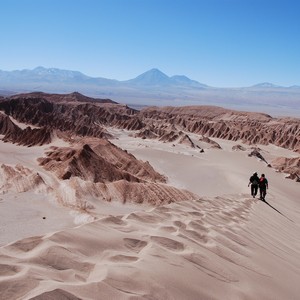After breakfast, enjoy a tour to the huge Atacama Salt Lake and marvel at its spectacular desert surroundings. Continue to the small Indian village of Toconao and observe its white houses and sculptures made of liparita (volcanic rock). In the late afternoon, drive to the Moon Valley to watch the sunset. Overnight in San Pedro.
Meal plan: Breakfast
A small colonial town, Toconao is most well known for its use of the volcanic stone liparitas, from which the houses and crafts are made. Even the town's name is derived from the word 'toco', meaning 'stone', from the extinct Atacameño language, Cunza. Aside from the liparitas craftsmanship, its main attraction is the imposing bell tower of the 18th century San Lucas church, standing in the centre of town. It is also the only site of fresh running water in the area, aiding the town's agriculture by irrigating its orchards of Spanish fruit trees and vegetables.
The highest, driest desert in the world, the Atacama Desert in Chile’s north is truly a sight to behold. Small adobe villages nestle in dramatic red rock scenery, and the comparisons to lunar landscapes are justified. The Atacama Desert, along with La Serena, is also arguably one of the best locations in the world for stargazing.
Bordered by mountain ranges and volcanoes, the Salar de Atacama (Atacama Salt Flats) spread over an immense 750,000 acres. They are the largest salt flats in Chile and hold the largest lithium reserve in the world, with a huge salt lake lying beneath the flats. They were also the site and main cause of the War of the Pacific (also called the Saltpeter War) towards the end of the 19th century, when Bolivia and Peru battled against Chile for its valuable mineral-rich territory. While the dry atmosphere has created a barren landscape void of greenery, there is a rich variety of birdlife, with Andean flamingos regularly spotted.
With an otherworldly scenery of rock, sand and salt, the landscape of the Atacama Desert is extraterrestrial - it's no wonder NASA and the European Space Agency tested their Mars Exploration Rovers here. The Moon Valley showcases many impressive rock formations, with its salt rock shaped through erosion to create different layers of colour and texture within curved canyons. The hanging rock of Coyote Stone offers spectacular views overlooking the valley. The Death Valley consists of a red sand landscape, with 330-foot-high dunes offering breathtaking panoramic views across the valley. Those with a taste for adrenaline can even try sand surfing down the dunes at high speeds.
